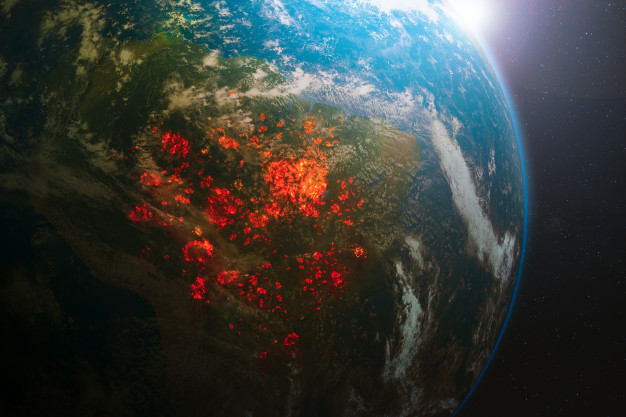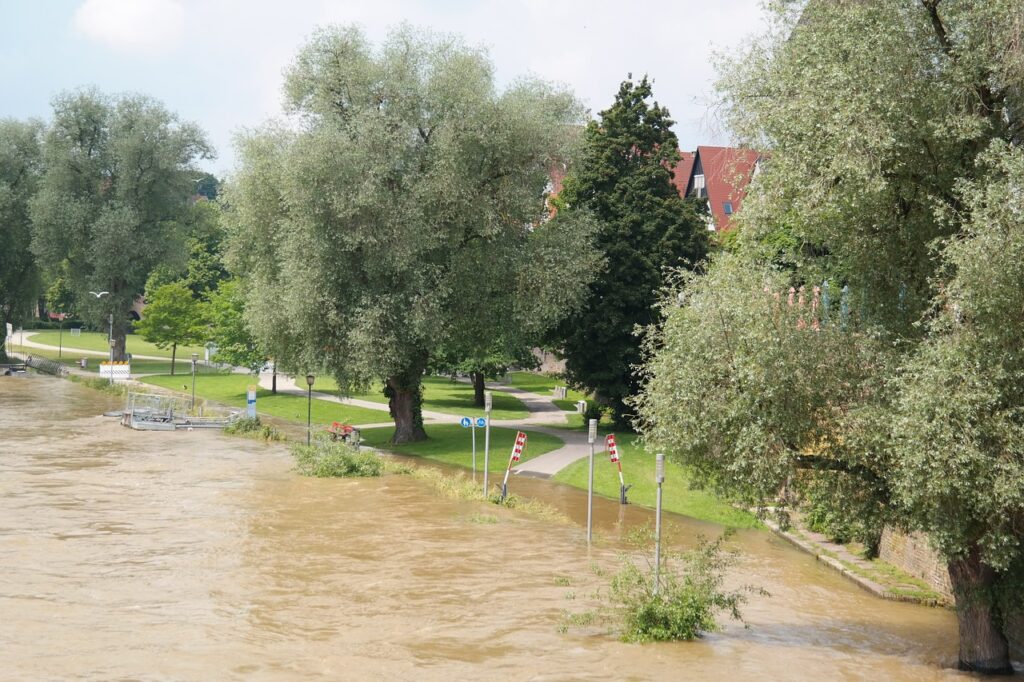Ever-increasing temperatures, irregular rainfall patterns, melting of ice caps, raging storms are what? They all are the signs of what we call Climate Change. The entire world has been facing disastrous effects due to it. But what exactly is Climate change. How much is the world affected by it? Which Asian Countries are at extreme risk from Climate Change? You will get to know everything about it through this article.
What is Climate Change?
As a whole, the climate is the weather conditions of a region over a longer period of time. Thus, India’s climate is hot and humid while the United Kingdom has a cold climate. Climate change is the drastic change of this climate over many years which leads to several unwanted events. For example, Antarctica has become much warmer over the years.
Climate change is not a phenomenon that takes place in a single day or a year. It takes years to see visible changes in climate. Data-driven researches tell us that whether climate change has occurred or not. This also enables us to predict future climatic conditions. This is done with climate models which generate results with impressive accuracy.
Causes of Climate Change
Our Earth undergoes several natural processes. All of these contribute to changes in climate. But climate change has been taking place off late mostly due to man-made interventions. Some of the prominent reasons why climate change has been taking place are:
1. Natural Processes
- Volcanic eruptions
- Changes in naturally occurring greenhouse gas
- Changes in Sun’s intensity But the changes that have been taking place in the 20th century have been occurring at a much faster rate than ever before and thus are not caused only by natural sources. Rather natural sources are just a small portion of it.
2. Man-made Reasons
- Greenhouse emissions are the major source of changing climate. These are the gases that keep the planet warm enough for the sustenance of life. But in recent decades, their concentrations have increased exponentially. Gases like carbon dioxide, methane and nitrous have been at their highest levels since the last 800,000 years.
- Excessive usage of fossil fuels such as coal, petrol and oil for human uses like electricity, heat and transport is another major cause of climate change.
- Deforestation shouldn’t be forgotten. Deforestation contributes to 20% of the total carbon emissions.
-
Other human activities like agriculture, constructions, human settlements, overgrazing and pollution are other such factors that have caused climate changes off late.
What has been the effects of Climate change on Asia?
Asia is the largest continent on the surface of Earth. Home to the majority of the population of the world, it faces the greatest risk from climate changes. The excessive population combined with aggressive human activities have led to quite some risk to the entire continent of Asia.
99 of the 100 riskiest cities facing climate changes are in Asia!
The environmental changes haven’t been distributed evenly. A famous risk consultancy named Verisk Maplecroft in its report published a striking statement. It states that out of the 100 cities that face the most environmental risks, 99 of them are located in Asia. This is a huge statement and a big red alert for the complete continent. On the other hand, Europe has 14 of the 20 safest cities in store. It was found that cities can be at different levels of risk based on environmental changes and climatic changes
Expert researchers took the world’s 576 largest cities and scored them on various parameters such as air quality and water quality, water scarcity, heat, weakness to climatic changes, population, economies, infrastructure towards any natural calamity and their landscapes. According to the report, more than 1.5 billion people live in cities that face high or extreme risk.
The heart of these high and extreme risk cities lies in Asia. The region has the highest density of population. This puts a lot of excessive pressure on the natural resources of the region leading to their excessive exploitation. This has led to several natural hazards. A bigger portion of risk also depends on how climate changes affect environmental changes. And yes, it does affects a lot. This could pave the way for Africa to be the worst continent anytime soon.
How do different Asian countries fare?
Not a proud moment but India fares worst as a country. It has 13 of the 20 most risky cities and 43 of the 100 top riskiest cities. This list includes the powerhouses of the country such as Delhi, Mumbai, Chennai, Chandigarh and many such major cities. The poor quality of our country is blamed for the most part for the poor environmental condition. The ongoing pandemic is only going to worsen the condition in the country.
China isn’t far behind with 37 of the 100 most risky cities. Some of the major cities have also been mentioned in this list. China also has to blame its air quality for its poor condition. Although the Chinese government has made plans for cleaning up of air, they have been quite late in their implementation.
Surprisingly, it is Indonesia’s Jakarta that is most vulnerable to changes due to climate. This is primarily due to the increasing sea levels, depletion of the natural water table, poor air quality and large population. This makes it the fastest sinking city in the world with estimates saying that some portions to be underwater by 2050.
African cities are greater at risk from climate changes mostly due to poverty and poor public services and infrastructure. Scotland’s Glasgow is the least vulnerable to climate change and the fourth-least vulnerable to environmental risks. Europe and Canada experience the least risk from environmental changes and have been the favourite destination for organizations all around the world.
Risks for different countries
- Countries like Bangladesh, India and Pakistan by the end of 2050 could experience an increase in heat and humidity affecting workability and productivity. The temperatures are expected to rise by two to four degrees. The countries could see more rainfall and could invariably affect the cropping patterns of this region.
- Emerging countries of Asia such as Malaysia, Myanmar, Vietnam, Indonesia, Thailand, Philippines could see similar climatic changes just like Bangladesh, Pakistan and India. With more labour intensive work in these countries, employment and workability could be affected much more.
- Advanced Asia including Japan, South Korea and Singapore are expected to be on the lower side of effects. Water scarcity and supply could be a threat while being coastal regions they are always prone to Earthquakes and tsunamis. These regions could supposedly experience a biome change as well.
- Mainland China due to its large extent can see different climatic changes. But as a whole, it is expected to become hotter. Agriculture could bloom in the near time but it could see more precipitation and thus affectig
the global supply chain system.
How can Asia prepare for better handling of climate change?
Asia is at great risk of being the most affected due to the ongoing climate changes. It is the responsibility of the policymakers, leaders and individuals to derive some techniques that could help in better management of the situation. Certain measures can help the Asian countries deal with this situation in a much effective way.
1. Protect people and the assets This includes
- Improving the infrastructure
- Building defence systems
- Regenerate natural resources and ecosystems
- Defence systems that reduce the longevity of natural calamities.
- Develop relief measures.
2. Proper diagnosis of the risk and derivation of a response The risk should be understood till its depth and using creative mindsets with necessary technology deriving solutions could help in the long run. Developing a strategy for handling the risk is the greatest step here which requires great assessment of it.
3. Building a better mindset and deriving solutions More emphasis should be done on local and backup resources for they can be used in times of need. For example, the regions of Leh and Ladakh depended on glacier melts for their irrigation purposes. But with the decrease in glacier levels, supply has declined. Now they have derived a solution for it by storing the excessive meltwater in structures, helping them irrigate throughout the year.More financial help
4. More finance has to be employed on infrastructure. For an efficient response towards climate change, more investment should be done in the domain. Insurances should be provided for more encouraging development in every region.
Conclusion:
Asia is the largest continent and the hub of the majority of the population of the world. With such a high population, greater risks are on Asia’s head due to overexploitation of resources, larger emissions, and poor air quality. Having 99 out of 100 most risky cities due to environmental changes, Asia certainly needs to quicken up its process of handling this situation. The leaders and officials need to come up with and derive techniques that help them in the long run. Additionally, the common public has to become more responsible and take care of what’s going around them.
So now when you know which Asian Countries are at extreme risk from Climate Change. I hope this is helpful to you


